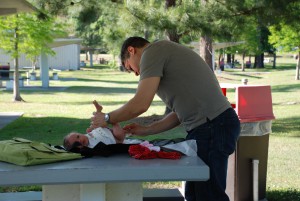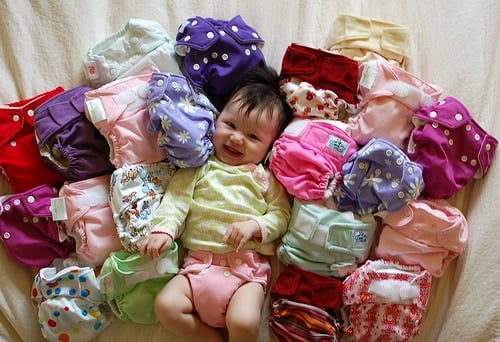To read the previous part, go to The Colour of Baby Stool.
Breastfeeding Baby
For a breastfed baby, you will note that stool can be formless, more liquid with clumps, mucousy (secretions), sticky (gelatinous), which can seem like diarrhea, even if it’s not the case. The stool isn’t consistent for the simple reason that there is no waste in breast milk—everything can be absorbed by the baby even if their gastrointestinal system is immature. What you find in the diaper is what the baby didn’t have the time or the capacity to absorb. That is why it’s rare for a baby to be constipated if they’re breastfed.
If your baby is grumpier, with changes in their stool (more explosive, more liquid like water—diarrhea?), they don’t seem in good health and even a bit feverish, they may have an infection or maybe an allergy. A professional should see the baby for a full examination unless they just had their 2-month vaccine (normal side effects).
Bottle-Fed Baby

A bottle-fed baby’s stool will be more consistent, from soft to pasty. This milk has waste eliminated in the stool. This is why the baby needs to learn to push out their stool to be comfortable. Even if the stool is more consistent than with breast milk, they won’t necessarily become constipated. Constipation refers to stool that is hard and drier, more difficult for a baby to push out (rabbit droppings). Babies affected by this should consume hydrolysed formulas prescribed by a doctor. They’re a bit easier to digest, absorb and eliminate.
Giving water to a baby older than three weeks helps facilitate stool elimination. Water is a potent natural laxative. You can also mix prune juice with water (50/50) between feedings, twice a day, to provide your baby with more fibre to soften their stool.
Attention parents! You shouldn’t continuously stimulate your baby’s anus, as they won’t learn how to do it themselves. They will wait for you to do it for them. You will create a bad habit, and they won’t learn on their own.
To read the next part of this article, go to Baby Stool Frequency.


